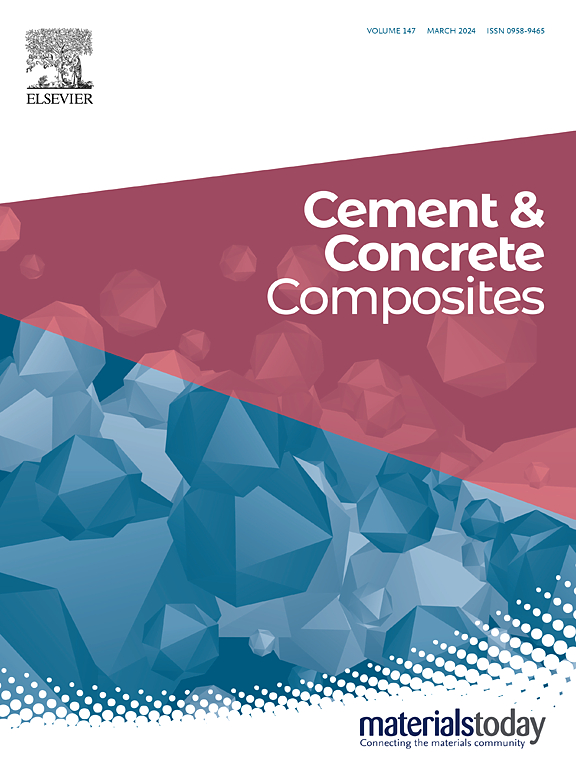CO2分压和温度对富CO2水中水泥浆体降解动力学的影响
IF 13.1
1区 工程技术
Q1 CONSTRUCTION & BUILDING TECHNOLOGY
引用次数: 0
摘要
在喀斯特地区,地下水通常表现出高水平的二氧化碳(富二氧化碳水),这导致地下混凝土结构的钙浸出。混凝土覆盖层的劣化会引起钢筋的腐蚀,对结构的耐久性造成严重威胁。研究了不同CO2分压(0.1、0.4、0.8 MPa)和富CO2水温度(5°C、25°C、50°C)条件下水泥浆体的降解行为和微观结构发展,并对其降解动力学进行了探讨。结果表明:该水泥浆体在富含co2的水中易于发生反应,其活化能为6.46 kJ/mol;该降解过程是碳化和钙浸出共同作用的结果。CO2分压和温度的升高均加速了降解,且温度的敏感性显著高于压力。在此基础上,建立了降解深度预测模型,并将其应用于富co2水低流速条件下具有完整降解层的水泥浆体。本文章由计算机程序翻译,如有差异,请以英文原文为准。
Effect of CO2 partial pressure and temperature on degradation kinetics of cement paste in CO2-rich water
In karst areas, the groundwater typically exhibits high levels of carbon dioxide (CO2-rich water), which leads to the calcium leaching of underground concrete structures. The deterioration of concrete cover can cause the corrosion of the steel bars, resulting in a serious threat to the durability of the structures. In this paper, the degradation behaviors and microstructure development of cement paste under different CO2 partial pressures (0.1, 0.4, 0.8 MPa) and temperatures (5 °C, 25 °C, 50 °C) of CO2-rich water were studied, and the degradation kinetics were discussed. The results indicate that the reaction of the cement paste is prone to occur in CO2-rich water, with an activation energy of 6.46 kJ/mol. The degradation process results from the combined effects of carbonation and calcium leaching. Both increased CO2 partial pressure and temperature accelerate degradation, however, and the sensitivity of temperature is significantly higher than pressure. Based on this, we establish a prediction model of degradation depth, which is applied to the cement paste with intact degradation layer in low flow rate of CO2-rich water.
求助全文
通过发布文献求助,成功后即可免费获取论文全文。
去求助
来源期刊

Cement & concrete composites
工程技术-材料科学:复合
CiteScore
18.70
自引率
11.40%
发文量
459
审稿时长
65 days
期刊介绍:
Cement & concrete composites focuses on advancements in cement-concrete composite technology and the production, use, and performance of cement-based construction materials. It covers a wide range of materials, including fiber-reinforced composites, polymer composites, ferrocement, and those incorporating special aggregates or waste materials. Major themes include microstructure, material properties, testing, durability, mechanics, modeling, design, fabrication, and practical applications. The journal welcomes papers on structural behavior, field studies, repair and maintenance, serviceability, and sustainability. It aims to enhance understanding, provide a platform for unconventional materials, promote low-cost energy-saving materials, and bridge the gap between materials science, engineering, and construction. Special issues on emerging topics are also published to encourage collaboration between materials scientists, engineers, designers, and fabricators.
 求助内容:
求助内容: 应助结果提醒方式:
应助结果提醒方式:


